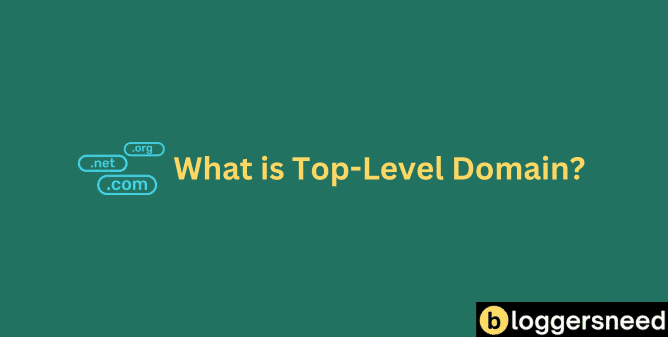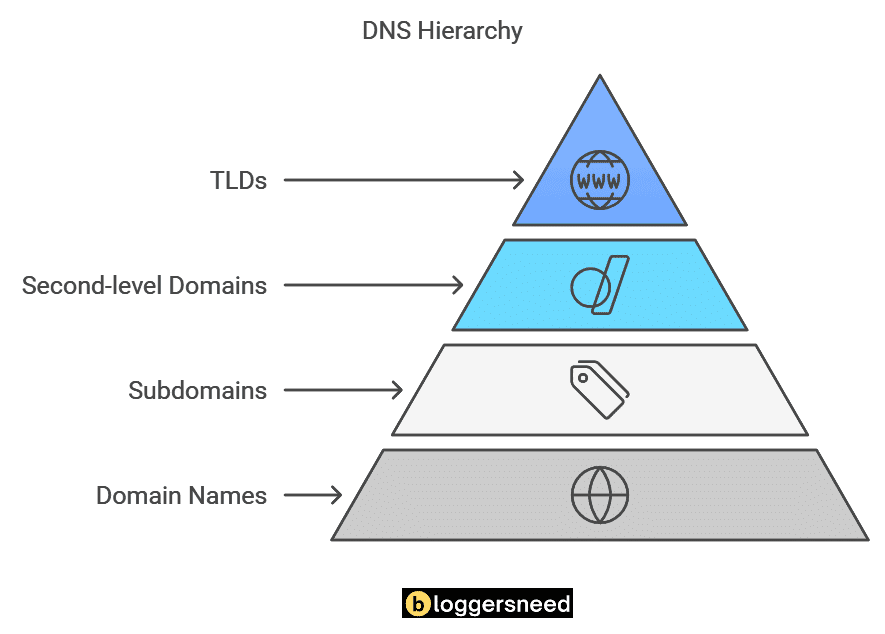
A top-level domain (TLD) is the last part of a domain name, such as .com, .org, or .net, categorizing websites by purpose or geographic area and influencing credibility and SEO performance. You’ll find TLDs like .gov for U.S. government sites and .uk for U.K. sites. Choosing the right TLD is essential for your website’s identity and trustworthiness. TLDs come in four main types: generic (gTLDs), country-code (ccTLDs), sponsored (sTLDs), and new generic (nTLDs). They are structured within the Domain Name System (DNS) hierarchy, managed by ICANN and delegated to registries like VeriSign for .com. Selecting the right TLD aligns with your branding strategy and target audience. Keep reading if you want to learn more about how TLDs impact your online presence.
Table of Contents
What is a Top-Level Domain?
A top-level domain (TLD) is the closing segment of a domain name, appearing to the right of the last dot, such as .com, .org, or .net, and it serves as a critical component in the hierarchical Domain Name System (DNS) of the internet. TLDs categorize websites by indicating their purpose or the type of organization behind them, which can influence user trust and search engine optimization (SEO) outcomes.
You’ll find them important because they categorize websites based on their purpose or geographical area, such as .gov for U.S. government websites or .uk for U.K.-based websites.
The benefits of TLDs include enhancing website identity and SEO performance, as well as aiding in user trust.
Why Are Top-Level Domains Important?
A key part of any domain name, the top-level domain (TLD) is essential for both technical and marketing reasons. TLDs help categorize websites by purpose or geographic location, improving user experience and credibility.
For instance, .com is commonly used for commercial sites, while .org is for organizations. TLDs like .gov and .edu are restricted, conveying an additional level of trust.
They also impact search engine rankings and customer perception, making them critical for building a successful online presence. With more than 1,500 TLDs available, as noted by GoDaddy, selecting the appropriate one is crucial in influencing search engine rankings and shaping customer perception. This decision is instrumental in developing a robust online presence.
What Are the Benefits of Top-Level Domains?
The benefits of top-level domains (TLDs) are significant for businesses and website owners, impacting branding, trust, and search engine optimization (SEO). Below are the key advantages of TLDs.
- Branding Opportunities: TLDs allow businesses to create a unique online identity that reflects their industry or niche.
- Trust and Credibility: Familiar TLDs like .com and .org are recognized as more trustworthy, leading to higher click-through rates.
- Domain SEO Impact: While TLDs don’t directly affect rankings, a credible TLD can enhance user engagement and visibility.
- Targeting Specific Audiences: Country code TLDs (ccTLDs) help businesses target specific geographic markets satisfactorily.
- Memorable and Unique: Specialty TLDs can make a website more memorable and boost in marketing efforts.
What Are the Types of Top-Level Domains?
Regardless of your website’s purpose, choosing the right type of top-level domain is essential for effectively categorizing and communicating your site’s identity.
- gTLDs: Generic Top-Level Domains (gTLDs) are the most commonly used type of TLD. They include .com, .org, and .net. GtLDs are unrestricted, making them versatile for various uses. For example, .com is widely used for commercial entities, while .org is often associated with non-profit organizations.
- ccTLDs: Country Code Top-Level Domains (ccTLDs) are specific to countries, such as .uk for the UK and .ca for Canada. They help in regional targeting and localization.
- sTLDs: Sponsored Top-Level Domains (sTLDs) are restricted to specific communities. Examples include .edu for educational institutions and .gov for US governmental entities.
- nTLDs: New Generic Top-Level Domains (nTLDs) have expanded to include niche-specific options like .app and .tech. They enhance competition and consumer choice in the domain name space.
How Are Tlds Structured Within the Domain Name System (DNS) Hierarchy?
Choosing the right top-level domain (TLD) is essential for categorizing and connecting your website’s identity.
The Domain Name System (DNS) hierarchy organizes domains into layers: the root domain at the top, followed by the TLD, then the second-level domain, and finally subdomains.
Each TLD, like .com or .org, is managed by ICANN and delegated to specific registries, such as VeriSign for .com.
When you enter a domain name, the DNS server follows this hierarchy to resolve the IP address, guaranteeing the correct site loads.
For example, in the domain name google.com, .com is the TLD that directs the DNS resolver to the correct server.

How to Choose the Right Top-Level Domain?
To choose the right top-level domain, start by considering your website’s purpose and target audience. Align your TLD with your branding strategy, .com is universal and widely recognized, while .edu and .gov are specific to educational and governmental entities.
Use a Country Code TLD (ccTLD) like .uk or .fr for regional audiences. For industries, .tech and .biz can be more relevant. Check availability and pricing across different TLDs before finalizing your choice.
While SEO benefits are minor, a suitable TLD can enhance user experience and brand identity. Remember to keep up your brand identity by registering additional relevant TLDs to prevent confusion.
What Are the Common Misconceptions About TLDs?
When selecting a top-level domain, it’s easy to fall into common traps. One common misconception is that having a .com domain is the only way to establish credibility and trust.
However, this isn’t always the case; other TLDs like .org, .net, and even newer gTLDs can be just as effective depending on your business type and target audience.
Another misconception is that nontraditional TLDs are less recognizable. While .com remains the most popular, TLDs like .co, .io, and .me have gained significant traction in certain industries, particularly tech startups.
What Are the Frequently Asked Questions about Top-Level Domain?
Do you have questions about top-level domains? We’ve answered the commonly asked questions.
How Much Does a Top Level Domain Cost?
The cost of domain name especially a top-level domain (TLD) can vary widely, typically ranging from $10 to $50 per year, depending on the domain extension and the registrar you choose. Some premium domains may even cost hundreds or thousands of dollars due to their popularity or uniqueness.
Does Domain Extension Affect SEO?
Yes, the domain extension can affect SEO because certain extensions, like .com, are more trusted by users, which can influence click-through rates and search rankings.
Can a Top Level Domain Have Numbers?
Yes, a Top Level Domain (TLD) can have numbers, like in “.123” or “.xyz123,” which shows that TLDs can include both letters and numbers.
Can I Create My Own Top Level Domain?
Yes, you can create your own top-level domain (TLD) by applying through organizations like ICANN, but it can be a complex and expensive process.
Is .Com a Top Level Domain?
Yes, .com is a Top Level Domain (TLD) that is part of the Domain Name System (DNS) and is used to identify commercial websites on the internet.
Is .Biz a Top Level Domain?
No, .biz is not a Top Level Domain (TLD) as it is considered a generic Top Level Domain (gTLD) used for businesses.
Affiliate Disclosure: Some of the links in this post are affiliate links, which means I may earn a small commission if you make a purchase through those links. This comes at no extra cost to you. Thank you for your support!
